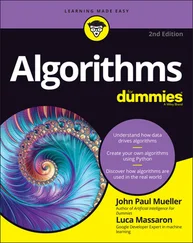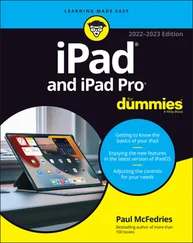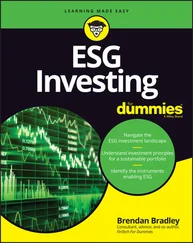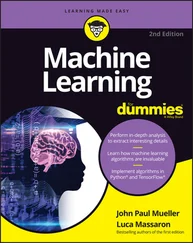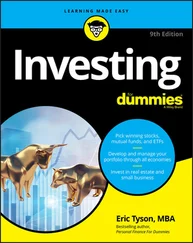This term refers to the act of buying an asset that fits an investor’s profile and goals, and that is meant to be held long term (in years). The asset will always run into ups and downs, but as long as the asset you’re holding is trending upward (a bull market), you’ll be okay.
Investing in precious metals may not be for everyone, but it’s an appropriate consideration for many investment portfolios. The common stock of large or midsize mining companies is a good example of an appropriate vehicle for investors. (See Chapter 7for details.) Another great vehicle for investors is exchange-traded funds (ETFs) and mutual funds (covered in Chapter 8).
 Trading is truly short term in nature and is meant for those with steady nerves and a quick trigger finger. Many “trading systems” are out there, and this activity requires extensive knowledge of market behavior along with discipline and a definitive plan. The money employed should be considered risk capital and not money intended for an emergency fund, rent, or retirement.
Trading is truly short term in nature and is meant for those with steady nerves and a quick trigger finger. Many “trading systems” are out there, and this activity requires extensive knowledge of market behavior along with discipline and a definitive plan. The money employed should be considered risk capital and not money intended for an emergency fund, rent, or retirement.
The gold and silver venue for traders could be mining stocks (see Chapter 7), but more likely it would be futures and/or options because they’re faster-moving markets. Get more information on futures in Chapter 12and options in Chapter 13.
Speculating can be likened to “financial gambling.” Speculating means that you’re making an educated guess about the direction of a particular asset’s price move. You’re looking for big price moves to generate a large profit as quickly as possible, but you also understand that it can be very risky and volatile. Your appetite for greater potential profit coupled with increased risk is similar to the trader (see the previous section), but your time frame is different. Speculating can be either short term or long term.
Your gold and silver venue of choice could be stocks, but more likely, the stocks would be of mining companies (called junior mining stocks or exploratory companies) that are typically smaller companies with greater price potential (see Chapter 7). Speculating is also done in leveraged and inverse ETFs (covered in Chapter 11).
For shorter-term speculating, my main preference is long-dated options on stocks, futures, or ETFs. If you think that a stock, ETF, or futures contract is going up in the short term, then use call options. If you think their price will decline or crash in the short term, then consider put options. Both types of options are covered in Chapter 13.
 The year 2020 was a great speculating year. My clients and I made plenty of money with call options on gold and silver vehicles while we also bought put options on stocks, and both produced fantastic gains.
The year 2020 was a great speculating year. My clients and I made plenty of money with call options on gold and silver vehicles while we also bought put options on stocks, and both produced fantastic gains.
 For more information on successful approaches to aggressive speculating in stocks and ETFs and for details on advanced options strategies, consider my book High-Level Investing For Dummies (Wiley).
For more information on successful approaches to aggressive speculating in stocks and ETFs and for details on advanced options strategies, consider my book High-Level Investing For Dummies (Wiley).
Building Your Financial Profile
Your approach to gold and silver will be dictated by what type of participant you plan on being (conservative, aggressive, and so forth) and what goals you have (long term, short term, or intermediate term). Some approaches with gold and silver are great for, say, retirement while others are more short term to fund near-term projects like adding to savings or for a down payment on a real estate purchase. Spend plenty of time analyzing your personal style, your needs, and your goals.
For the conservative investor
A conservative investor seeks quality investments (such as stocks with good fundamentals and undervalued assets such as silver) and holds them for the long term. Conservative investors generally avoid short-term speculating and trading, and they avoid assets that are not undervalued and that offer features such as paying dividends. They also participate in a market where there are favorable trends (such as increasing demand for the product/service offered) so that the stock or asset has steady price appreciation going forward.
The conservative investor should consider a long-term approach with quality vehicles and quality stocks (meaning profitable and financially strong companies). The best vehicles would be some mix of the following:
Direct physical bullion (see Chapter 9)
Major mining stocks (see Chapter 7)
Physical gold and silver ETFs (see Chapter 8)
Major mining stock ETFs
Gold and silver mutual funds (see Chapter 8)
 You don’t need to get all of those, of course, just choose one or more as you judge your preferences and goals.
You don’t need to get all of those, of course, just choose one or more as you judge your preferences and goals.
Growth investors hope to add assets or stocks/ETFs that have strong potential in the near to long term to rise in value (strong price appreciation). They see growth as the primary concern, and income (such as dividends) is either a minor or unimportant consideration.
For those who prefer choices that have greater growth potential while tolerating more risk, the range of choices are
Major mining stocks (as a foundational choice; see Chapter 7)
Junior mining stocks
Junior mining stock ETFs (see Chapter 8)
Mining stock leveraged ETFs (but not a huge amount; see Chapter 11)
A speculator seeks rapid price appreciation in the near term (over weeks or months) and accepts the possibility that volatility and (hopefully) temporary price declines may occur on the path to high potential gains.
Speculators want to get set up for outsized gains, so they’ve done their homework and are aware of greater risks. Here are their range of choices:
Junior mining stocks (see Chapter 7)
Junior mining stocks leveraged ETFs (see Chapter 11)
Long-dated call and put options (see Chapter 13)
Traders are looking for gains within days or weeks typically, so they want to play volatility and don’t mind seeking short-term profits, say, being bullish on an asset this week and cashing in quickly for a profit and playing the other side (bearish) if they feel the same asset is ready to decline in price the following weeks. My associate Charlie puts it nicely: “While I play the ‘tides,’ typical traders play the ‘ripples.’”
Traders gravitate to the following choices:
Stocks (some play stocks directly; see Chapter 7)
Futures (see Chapter 12)
Options on stocks/ETFs (see Chapter 13)
Options on futures
Of the choices, the most common are options because they’re lower-cost vehicles and offer plenty of upside and downside volatility in the short term.
 When it comes to stock speculating and trading, it pays to read the exploits of those who truly mastered the craft. One of the greats in the history of financial markets is Jesse Livermore. In the late 1920s, he speculated on a stock market crash (which famously occurred in late 1929), and he made $100 million on that speculation — an astounding amount at that time. His thoughts on trading can be found in the book Reminiscences of a Stock Market Operator by Edwin Lefèvre (Wiley).
When it comes to stock speculating and trading, it pays to read the exploits of those who truly mastered the craft. One of the greats in the history of financial markets is Jesse Livermore. In the late 1920s, he speculated on a stock market crash (which famously occurred in late 1929), and he made $100 million on that speculation — an astounding amount at that time. His thoughts on trading can be found in the book Reminiscences of a Stock Market Operator by Edwin Lefèvre (Wiley).
Читать дальше
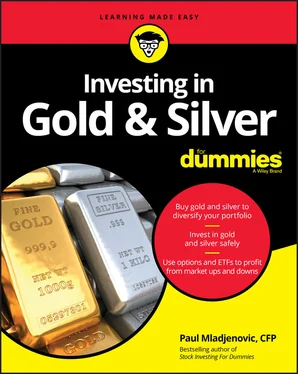
 Trading is truly short term in nature and is meant for those with steady nerves and a quick trigger finger. Many “trading systems” are out there, and this activity requires extensive knowledge of market behavior along with discipline and a definitive plan. The money employed should be considered risk capital and not money intended for an emergency fund, rent, or retirement.
Trading is truly short term in nature and is meant for those with steady nerves and a quick trigger finger. Many “trading systems” are out there, and this activity requires extensive knowledge of market behavior along with discipline and a definitive plan. The money employed should be considered risk capital and not money intended for an emergency fund, rent, or retirement. The year 2020 was a great speculating year. My clients and I made plenty of money with call options on gold and silver vehicles while we also bought put options on stocks, and both produced fantastic gains.
The year 2020 was a great speculating year. My clients and I made plenty of money with call options on gold and silver vehicles while we also bought put options on stocks, and both produced fantastic gains. For more information on successful approaches to aggressive speculating in stocks and ETFs and for details on advanced options strategies, consider my book High-Level Investing For Dummies (Wiley).
For more information on successful approaches to aggressive speculating in stocks and ETFs and for details on advanced options strategies, consider my book High-Level Investing For Dummies (Wiley).

